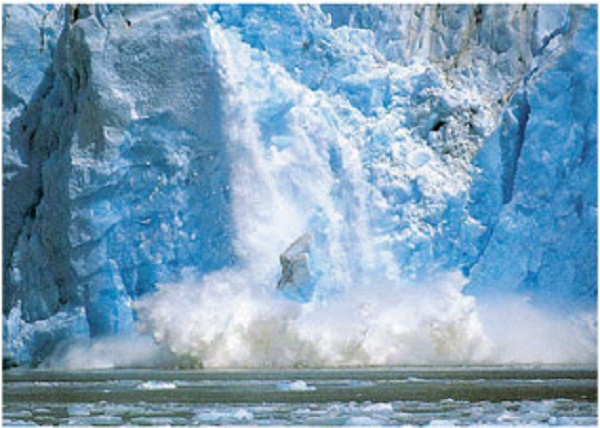Human kind, which is now so keen to hack into ecosystems secrete to save it from climate change, had obviously underestimated the powers of nature to revert back to destruction and over-exploitation of its resources. Climate change is the most lethal defense mechanism of mass destruction deployed by mother earth to revert back. As it appears, nature’s methodology of destruction is more cruel and insensitive than that of humans.
Scared of nature’s fury, now we have already made some hypothesis that with technologies and concepts including those based on geo-engineering and bio-engineering ecosystem could be preserved or restored. Let’s go through some of such hypothesis.
Giant Sandstone Walls
As a solution to increasing desertification due to deforestation, a student at London’s Architectural Association, Mangus Larsson, suggests a 6,000 km long wall made of artificially solidified sandstone that’ll span the Sahara Desert from east to west. It’ll be done using a microorganism, bacillus pasteuril, found0 in wetlands. The microorganism would solidfy loose sand into sandstone. These sandstones would help soil to remain solid and fertile along with offering water and shade for animals and plants.
Rogue Geoengineering Experiment
California-based businessman Russ George dumped 100 tonnes of iron sulphate in the Pacific Ocean off the coast of British Columbia, Canada and it fueled growth of plankton. An area of about 10,000 square kilometers saw plankton boom. It’s a well know fact that planktons draw huge amount of carbon dioxide from atmosphere. Iron stimulates growth of phytoplankton such as diatoms, similar to algae. When it dies, it sinks deep into ocean along with carbon that remains buried there for centuries.
First Cloned Redwoods by the Archangel Tree Project

Under the Archangel Tree Project, it was initially intended to save old-growth trees, but later environmentalists instead cloned these trees and planted them in seven different countries. The project was started by David Milarch, a third-generation Michigan nurseryman, who had dreamed of creating an archive of the genetic material from old growth trees so that it could be preserved for future generations. The concept is similar to migrating into favorable climate conditions to survive. But it’s a huge challenge to ensure these cloned trees survive in wild.
Largest Smong-Sucking Vaccum Cleaner
Conceived by designer Daan Roosegaarde, world’s largest smog-cleaning machine had appeared on Kickstarter for crowfunding. It’s a seven-meter-tall tower, which runs of green energy and cleans 30,000 cubic meters of air per hour of ultra-fine smog and help urban parks and cities get rid of pollution. It’s bases on same technology that is used in domestic air-purifiers. Machine sucks air from the top, filter it and release it through vents provided on all sides. Trapped carbon particles in the smog will be compressed to create high-end jewelry.
Seawater-Spraying Cloud Machine
It’s one of the unique solutions suggested by researchers to prevent warming of atmosphere. Originated at the University of Calgary, part of this solution is a machine that sucks up sea water and spays it into air upto 3,000 feet to increase density of white clouds. Increase in density will reflect sunlight away from earth. Machine can suck up about 10 tons of water per second. Researchers estimate that to prevent temperature rise globally, it would take 1,9000 such ships at cost of $7 billion.
Reflecting Sunlight Into Space
In a new study published in the journal Environmental Research Letters, estimates that instead of using $1.5 billion SRM (solar radiation management system) to shield glaciers form sun, it would be cheaper to simply reflect back sunlight into space to prevent temperature rise. Rockets full of sulpur and other chemical will be shot up to 19 miles above earth surface. Chemicals would lead to formation of clouds which would reflect sunlight way. It might (theoretically) slow down the rate of glacier melting.
Summary
However, critics have revealed that even restoration projects meant to revive biodiversity have also becomes means of business and profit making. Most of them are mere dreams. Deforestation, poaching, trophy hunting, mining, fossil fuel guzzlers and industries that spit out lethal chemicals are killing biological life forms. So, now human kind is scared of loosing biodiversity and working on dreams for restoration or rectification of its ill deeds, which isn’t so easy.




